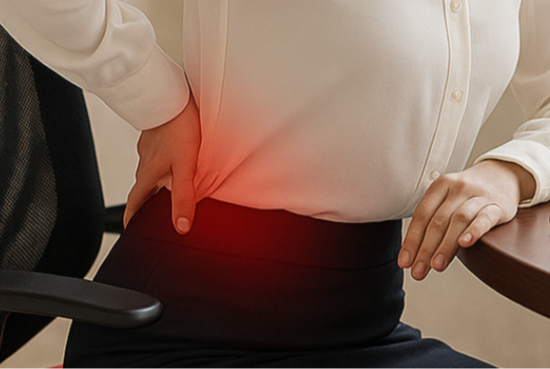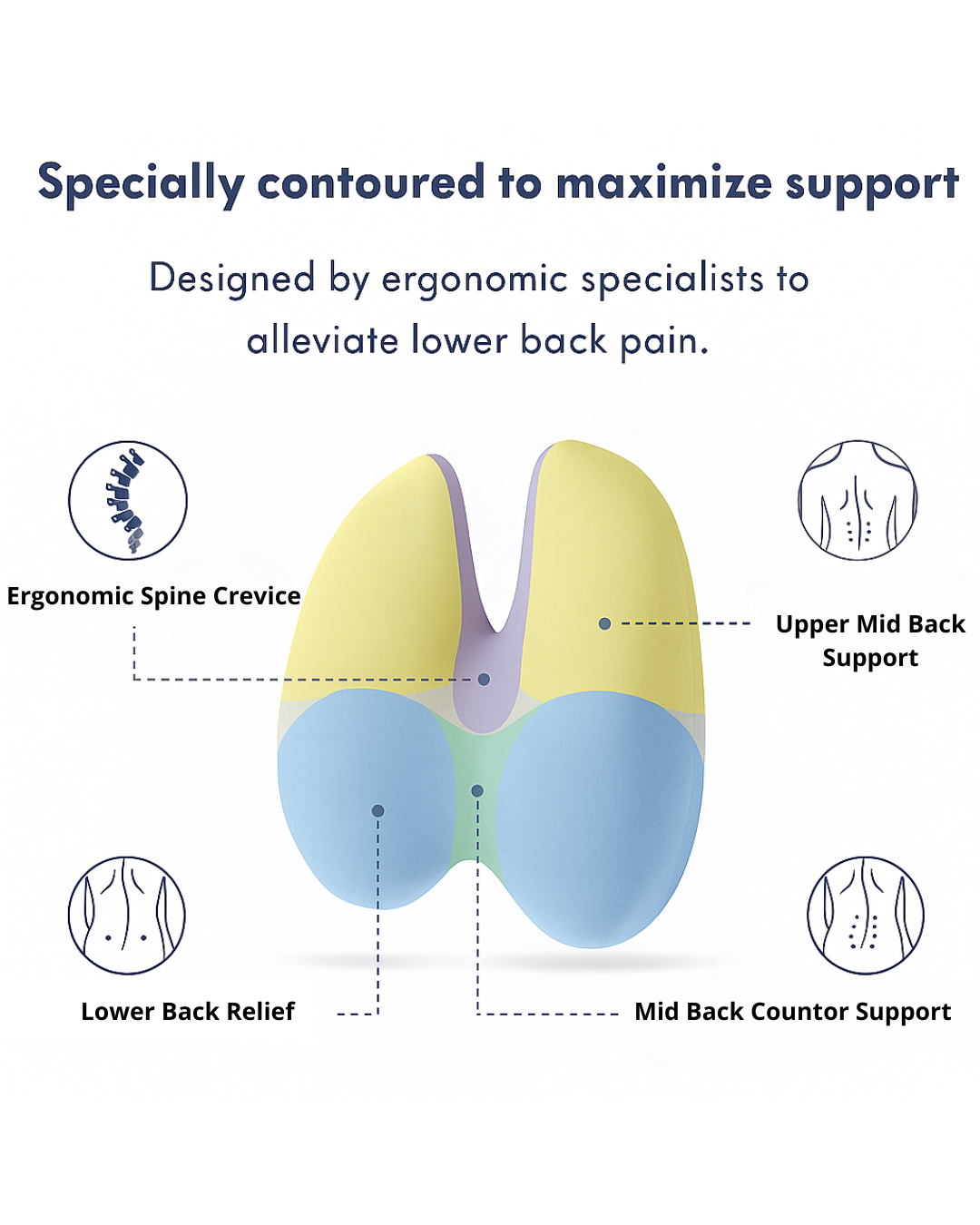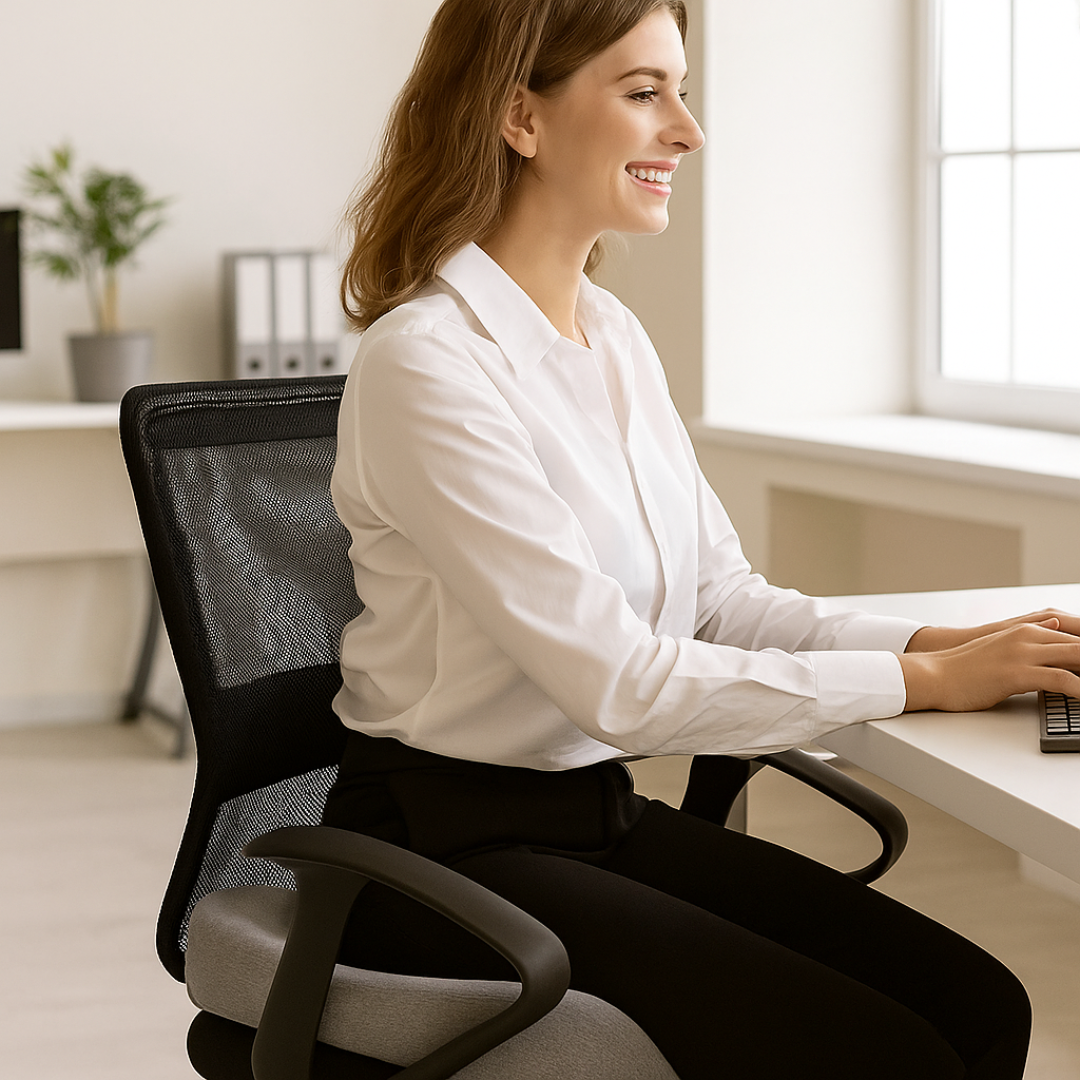SCIENCE

Humans weren’t designed to sit for 8+ hours a day. Prolonged sitting - especially in unsupported positions - compresses spinal discs, tightens hip flexors, and reduces blood flow through the legs. Over time, this leads to muscle imbalances, joint stress, and even nerve pain like sciatica.
According to a study published in The Spine Journal (2018), continuous sitting without lumbar support significantly increases pressure on the lower back and is a strong predictor of chronic discomfort in working populations.

Most people unknowingly sit in a posterior pelvic tilt - meaning the pelvis rolls backward, flattening the natural curve of the lower spine. This creates a chain reaction: lumbar compression, slouched shoulders, forward head posture, and strain on the neck and upper back.
The CoreRelief Cushion was designed to combat this through subtle anterior pelvic tilt support, helping the spine re-stack naturally, reducing strain and muscle fatigue over time.

Several physical therapists and posture experts reviewed our design during development. Here’s what one had to say:
“This cushion supports key postural zones and encourages subtle core activation. It’s a great daily-use product for reducing lumbar strain, especially for home workers.”
— Dr. Lisa Andrews, DPT
In addition, ergonomic interventions like supportive cushions have been shown to reduce reported discomfort by up to 47% in office workers, per a 2019 meta-analysis in Applied Ergonomics.
Humans weren’t designed to sit for 8+ hours a day. Prolonged sitting - especially in unsupported positions - compresses spinal discs, tightens hip flexors, and reduces blood flow through the legs. Over time, this leads to muscle imbalances, joint stress, and even nerve pain like sciatica.
According to a study published in The Spine Journal (2018), continuous sitting without lumbar support significantly increases pressure on the lower back and is a strong predictor of chronic discomfort in working populations.
Most people unknowingly sit in a posterior pelvic tilt - meaning the pelvis rolls backward, flattening the natural curve of the lower spine. This creates a chain reaction: lumbar compression, slouched shoulders, forward head posture, and strain on the neck and upper back.
The CoreRelief Cushion was designed to combat this through subtle anterior pelvic tilt support, helping the spine re-stack naturally, reducing strain and muscle fatigue over time.
Several physical therapists and posture experts reviewed our design during development. Here’s what one had to say:
“This cushion supports key postural zones and encourages subtle core activation. It’s a great daily-use product for reducing lumbar strain, especially for home workers.”
— Dr. Lisa Andrews, DPT
In addition, ergonomic interventions like supportive cushions have been shown to reduce reported discomfort by up to 47% in office workers, per a 2019 meta-analysis in Applied Ergonomics.



The Science Behind Kylori
Comfort, Engineered by Evidence
We blend ergonomic research with human-centered design to create support that actually works - for your spine, posture, and long-term wellbeing.
Designed with Research
Kylori Comfort is built on ergonomic research and clinical insight. Every curve, cutout, and contour is made to reduce pressure and promote better posture - based on real-world data.
Posture That Lasts
Sitting shouldn’t cause pain over time. Our dual-zone cushion system supports spinal alignment and reduces muscular fatigue, even during long workdays.
Built on Proven Principles
From spinal neutrality to pressure distribution, our design is guided by findings in occupational health and musculoskeletal science.

